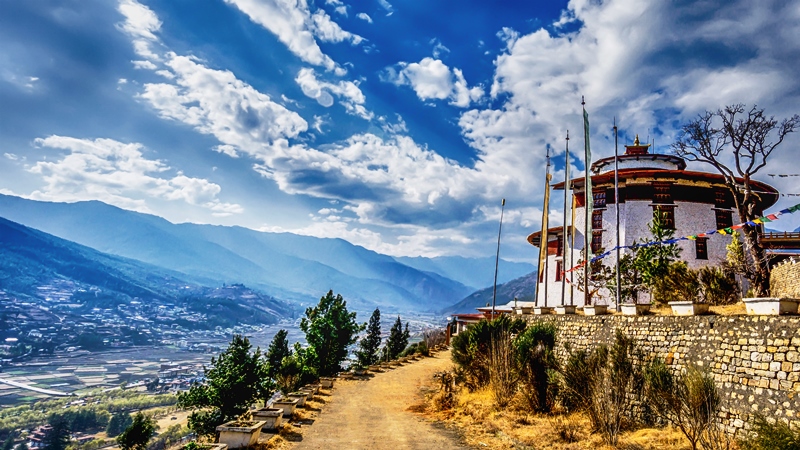While talking about the kingdom of Bhutan, nothing much really comes to mind; except for some basic facts like it lies in the Eastern Himalayas and is a landlocked country wedged between India and China. But, most of us don’t have the slightest clue about what this small country actually is. It has been enveloped in mystery for a long time, until the curtain, which has kept it hidden from the eyes of the world, slowly started lifting and the universe got to know that Bhutan is considered the happiest place on earth. Not only that, but it also measures its growth and development by calculating the Gross National Happiness? Yes, that’s true!
While other countries are in the race to become a superpower and strengthen their economy, Bhutan refuses to run after materialistic development and rather focuses on its heritage and values. Ever since the time it has been inhabited, which was around 2000 BC, as per archaeological findings, the people of this kingdom have been cut-off from the rest of the world. I believe that’s a good thing since this has allowed the country and its culture to remain unadulterated.
Buddhism, which was introduced in the region in the 7th century by Songtsen Gampo, the then Tibetan ruler, and strengthened in the 8th century with the arrival of Guru Rinpoche, also known as Padmasambhava, has deep roots here. Since then, Bhutan has seen the rise and fall of different rulers, but nothing has been able to shake the religious beliefs of the locals. Let us talk about the three things that make Bhutan the marvel that it is; the three sources of happiness you can say.
The Landscape
The location of the country says all about its terrain. Since it lies in the Himalayas, it has mountainous topography, with elevation ranging from 200 metres in its lowest sections to about 7570 metres at the peak of its highest mountain, which is Gangkhar Puensum. It is famed as the highest unclimbed mountain in the world. The northern parts of the country are dominated by snow-laden mountains and expansive glaciers, while the central section of Bhutan is replete with subalpine conifer forests. Moving to the south, you find thick climatic subtropical forests. The diverse conditions allow various wildlife species and vegetation to thrive here.
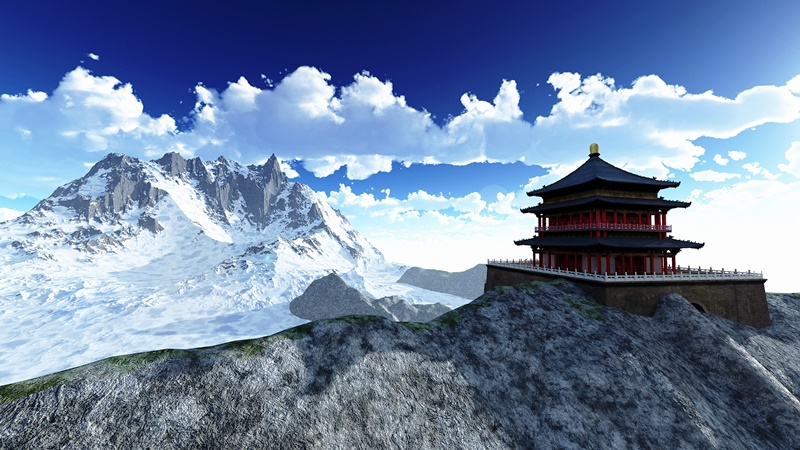
Since most parts of it have been untouched by human activity, it is nature at its best. The landscape of Bhutan makes it apt for a variety of adventure sports. What an irony that the Himalayan kingdom, one of the most peaceful countries on earth, is also a fantastic destination for adrenaline-filled activities! Besides, trekking, which is the obvious first sport to mention, since we are talking about the Himalayas, cycling and kayaking can also be enjoyed here. The crystal-clear Wang Chhu, Puna Tsang Chhu and Mangde Chhu rivers are good for rafting as well.
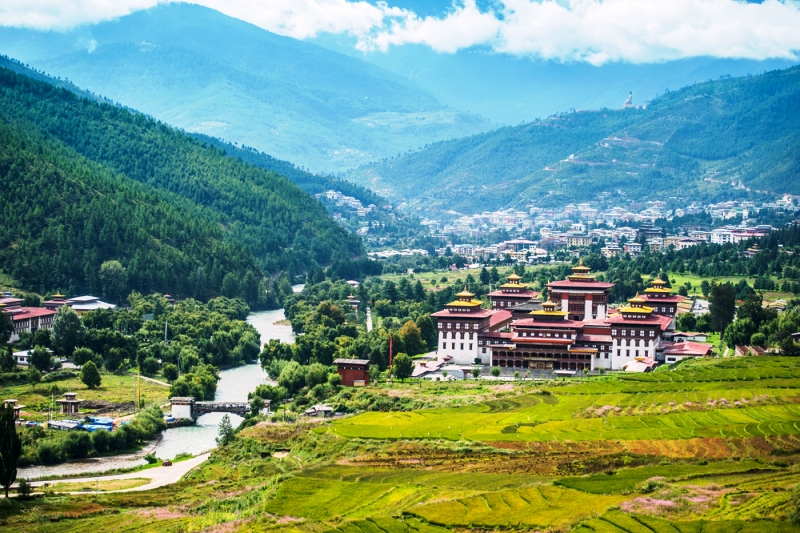
Let’s talk a little about the various trails in Bhutan, in case you are wondering about them. From a short 2-day itinerary you could follow over a long weekend to 25 days’ challenging journey, which takes hikers to numerous high altitude passes, hamlets, and the base camp of Bhutan’s highest mountain, a host of treks are offered here.
The Biodiversity
As mentioned above, the varied climatic conditions in Bhutan makes it home to most of the different species of flora and fauna found in the Eastern Himalayas. You might be surprised to learn that about 60 per cent of its total land area is protected, declared a national park or sanctuary. It also has over 40 rhododendron species and approximately 300 types of medicinal plants. The thick forests of the country are laden with blue poppies, magnolias, junipers and giant rhubarbs. Owing to its altitude, pines and oaks are also found in abundance here.
Now, let’s get to the large number of animals that are found in the country. If you are trekking here, you can easily come across a red panda, blue sheep, barking deer, sambar, grey langur or marmot. The higher sections of Bhutan are also home to a significant number of Himalayan black bears and snow leopards.
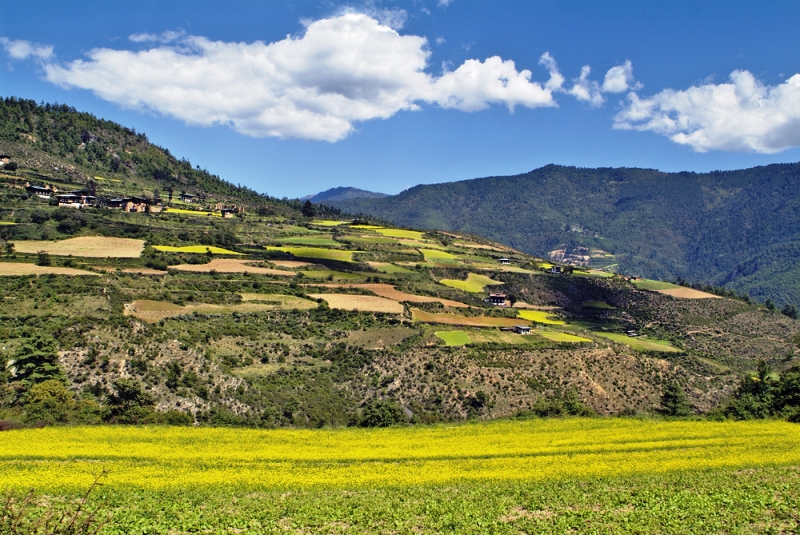
Bhutan has established all sorts of protected territories to preserve its wealth of biodiversity. One of the largest such sites in the kingdom, the 1300-sq km Jigme Singye Wangchuck National Park, is located in its central part. It is the abode of the 20 per cent of the total tiger population of Bhutan. Besides, this park has almost 400 bird species, including many rare ones.
The Culture
Now this is what I love the most about Bhutan. Do not let the marvellous landscape of Bhutan overshadow the intriguing culture of its people; the latter is just as amazing as the former, if not more. Because the kingdom has mostly been isolated in the lap of the Himalayas, the culture, traditions and values of the locals have been untouched, and are just as they were in the bygone era.
I am fascinated by everything, from their humble language, religious mask dance and the delicious food to the traditional architecture of their centuries-old monasteries and temples. The colourful clothes they wear are a huge source of amazement as well. Bhutanese men wear gho, a traditional knee-long dress, and use a belt called kera to tie it at the waist. The women of Bhutan dress in ankle-length kira and accompanied by a jacket, which they refer to as tego.
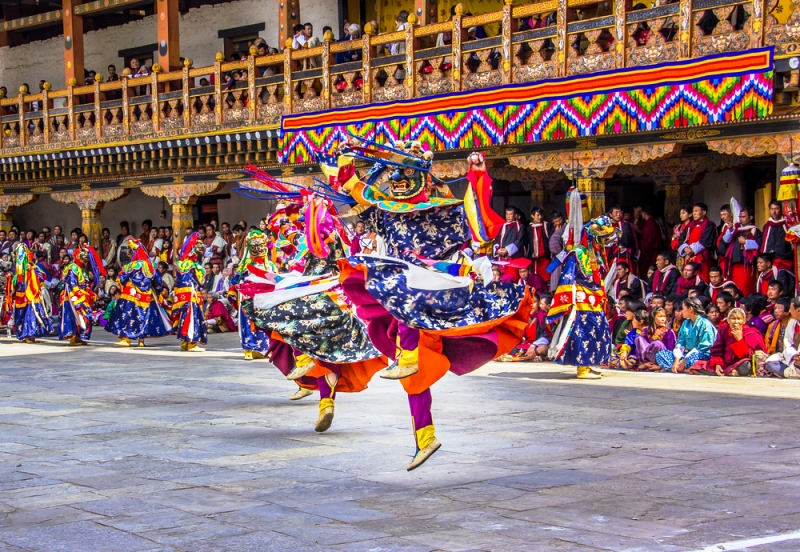
The various monasteries are the perfect place for one to learn about the locals – their way of life, their beliefs and many other things. And if not to learn anything, you can just visit them to find some peace of mind. Many monasteries are beautifully located on steep slopes of mountains as if the rule of gravity doesn’t apply to them. Adding further to its allure are the local festivals or Tshechus that combine the gratitude for nature and mentors; giving life a meaning to work for the well-being of others.
A recent theory suggests that Bhutanese secret to happiness lies in thinking about death. As per a study, if you anticipate death, you start looking at the positive things in life. So maybe the fear of losing their loved ones, and considering every moment as the last moment of their lives make them revere the present.
However, I suppose the reason Bhutan is the happiest place on earth is that it has completely refused to take part in the maddening race of the world, and is paving a new way for itself.
Their closeness to nature is something that will leave you astounded. Would you believe that one of the main purposes of establishing the 650-sq km Sakteng Wildlife Sanctuary, which came into being in 2003, was to preserve natural habitat for Yeti, the mythical creature? I’m not making this up; you can Google it if you want. Do I need to say that it is the only such protected territory in the world? Their love for nature can also be attributed from the fact that the country has a conservation policy, which states that more than 50 per cent of its area must remain forested.
Don’t be mistaken, it’s not like the country is poor. Bhutan boasts one of the fastest growing economies in the world, with its GDP growing at the rate of more than 5 per cent. Now, that’s some silent killer, isn’t it? Besides an abundant wealth of nature, the country also has a fortune in fiscal terms.
Well, I do not believe that this one blog, or for that reason, any number of blogs and articles are enough to satisfactorily elucidate the spectacle that the kingdom of Bhutan is. You have to be here to see what a gem of a place this country is and why everyone who comes here falls in love with it.

